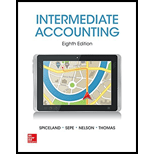
Investment: The act of allocating money to buy a monetary asset, in order to generate wealth in the future is referred to as investment.
Available-for-sale (AFS) securities: These are short-term or long-term investments in debt and equity securities with an intention of holding the investment for some strategic purposes like meeting liquidity needs, or manage interest risk.
Net income: Net income is the excess amount of revenue which arises after deducting all the expenses of a company. In simple terms, it is the difference between total revenue and total expenses of the company.
Comprehensive income: The total of net income and other comprehensive income (OCI) is referred to as comprehensive income. Comprehensive income should be reported on income statement, and statement of comprehensive income.
Other Comprehensive income: OCI includes all financial items which result in changes in the
Other-than-temporary (OTT) impairment: When the market value of an investment declines to a value lower than its cost, it is referred to as OTT impairment. The OTT impairment is considered as permanent loss and the loss is recorded as decrease in net income or earnings.
Unrealized holding gains and losses: These are gains and losses which are unrealized and are the result of changes in cost and fair values of the investment for the period the investment is held.
Debit and credit rules:
- Debit an increase in asset account, increase in expense account, decrease in liability account, and decrease in stockholders’ equity accounts.
- Credit decrease in asset account, increase in revenue account, increase in liability account, and increase in stockholders’ equity accounts.
To Prepare: The journal entries and their corresponding effects on the net income, comprehensive income and other comprehensive income related to the investment made by Company K.
Trending nowThis is a popular solution!

Chapter 12 Solutions
INTERMEDIATE ACCOUNTING W/CONNECT PLUS
- Nevaeh Manufacturing company has a beginning finished goods inventory of $16,200, cost of goods manufactured of $45,800, and an ending finished goods inventory of $18,500. The cost of goods sold for this company is: A. $37,300 B. $45,100 C. $43,500 D. $47,500 Zenith Enterprises has sales of $350,000, cost of goods sold of $190,000, net profit of $15,600, net fixed assets of $170,000, and current assets of $95,000. What is the total asset turnover rate?arrow_forwardI need help with this problem and accounting questionarrow_forwardPlease provide the accurate answer to this general accounting problem using appropriate methods.arrow_forward
- I need help with this general accounting question using standard accounting techniques.arrow_forwardCobalt Industries purchases a milling machine for $12,500. In addition, it incurs a sales tax of $600, shipping costs of $1,200, and $2,300 in labor costs to put the machine in place. The estimated residual value of the machine at the end of its useful life is $900. What is the depreciable base of the machine?arrow_forwardSubject: financial accountingarrow_forward

 AccountingAccountingISBN:9781337272094Author:WARREN, Carl S., Reeve, James M., Duchac, Jonathan E.Publisher:Cengage Learning,
AccountingAccountingISBN:9781337272094Author:WARREN, Carl S., Reeve, James M., Duchac, Jonathan E.Publisher:Cengage Learning, Accounting Information SystemsAccountingISBN:9781337619202Author:Hall, James A.Publisher:Cengage Learning,
Accounting Information SystemsAccountingISBN:9781337619202Author:Hall, James A.Publisher:Cengage Learning, Horngren's Cost Accounting: A Managerial Emphasis...AccountingISBN:9780134475585Author:Srikant M. Datar, Madhav V. RajanPublisher:PEARSON
Horngren's Cost Accounting: A Managerial Emphasis...AccountingISBN:9780134475585Author:Srikant M. Datar, Madhav V. RajanPublisher:PEARSON Intermediate AccountingAccountingISBN:9781259722660Author:J. David Spiceland, Mark W. Nelson, Wayne M ThomasPublisher:McGraw-Hill Education
Intermediate AccountingAccountingISBN:9781259722660Author:J. David Spiceland, Mark W. Nelson, Wayne M ThomasPublisher:McGraw-Hill Education Financial and Managerial AccountingAccountingISBN:9781259726705Author:John J Wild, Ken W. Shaw, Barbara Chiappetta Fundamental Accounting PrinciplesPublisher:McGraw-Hill Education
Financial and Managerial AccountingAccountingISBN:9781259726705Author:John J Wild, Ken W. Shaw, Barbara Chiappetta Fundamental Accounting PrinciplesPublisher:McGraw-Hill Education





